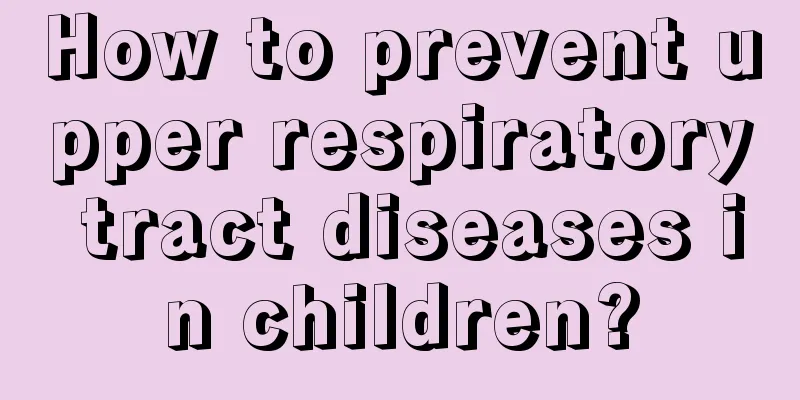What should I do if my two-month-old baby's jaundice has not subsided?

|
Nowadays, many newborns have symptoms of jaundice. The symptoms of jaundice mean that the baby's metabolism is not very stable. Parents are also very worried and don’t know how to deal with this disease. So today I will introduce to you how to treat a two-month-old baby with persistent jaundice. So what exactly causes jaundice? Generally speaking, it's okay. Jaundice is divided into physiological jaundice and pathological jaundice. Neonatal jaundice is generally divided into two categories: physiological jaundice and pathological jaundice. Physiological jaundice is a normal physiological phenomenon. Due to the metabolic characteristics of neonatal bilirubin, about 60% of full-term infants and more than 80% of premature infants may develop jaundice 3-5 days after birth, but the general condition is good. The jaundice of full-term infants will disappear within 14 days, and the jaundice of premature infants may be delayed to 3-4 weeks for complete disappearance. Pathological jaundice is abnormal and is generally related to the following factors: ① bacterial infection and neonatal sepsis as well as viral infection such as hepatitis A virus, hepatitis B virus, cytomegalovirus, etc.; ② neonatal hemolytic disease; ③ congenital biliary atresia and common bile duct cyst; ④ breast milk jaundice, jaundice usually appears 4-7 days after birth, reaches a peak at 2-3 weeks, and bilirubin will decrease 1-3 days after stopping breastfeeding. If there is no obvious decrease in 3 days, breast milk jaundice can be ruled out; ⑤ other factors such as genetic diseases, drug-induced jaundice, etc. Pathological jaundice should be considered in newborns when any of the following conditions occur: jaundice appears too early (appears within 24 hours after birth); jaundice is severe or progresses rapidly; jaundice lasts for a long time (more than 2 weeks in full-term infants and more than 4 weeks in premature infants); jaundice subsides and reappears. Pathological jaundice caused by any reason should be identified and treated, especially for premature infants under 1 week old and children with severe hypoxia, acidosis, intracranial lesions, and severe infections. Active treatment must be given as soon as possible to avoid adverse consequences. diagnosis 1. There is a history of abnormal delivery, a history of infection and medication before delivery, a history of blood transfusion, a family history of jaundice, and one or more other pathogenic factors. 2. Jaundice appears within 24 hours after birth, or appears one week after birth, rapidly worsens or does not subside for a long time, or subsides and then reappears, and is accompanied by symptoms such as anorexia, vomiting, not crying, lack of energy, and hepatosplenomegaly. 3. Laboratory examination: The serum bilirubin of full-term newborns is 205.2umol/L, and the direct bilirubin of premature infants is 256.5umol/L. If both conjugated bilirubin and unconjugated bilirubin are elevated, pathological jaundice should be considered. Physiological jaundice should subside 7-10 days after birth. If the bilirubin level is 34.2umol/L, it is pathological jaundice. Differential Diagnosis Physiological jaundice: Jaundice starts 2-3 days after birth and lasts for about 1 week. It is mainly characterized by increased unconjugated bilirubin, which is hemolytic and hepatocellular, with no clinical symptoms. The above are some symptoms of baby jaundice and simple solutions introduced to us by professionals. We should pay more attention to the child’s physical movements. If the above situations occur, we must pay attention and seek help from a doctor in time. But don't worry too much, because these are all positive phenomena. |
<<: Why are newborns deformed?
>>: What are the methods to reduce jaundice in babies?
Recommend
What should I do if my baby’s genitals are red?
Now that the two-child policy has been fully open...
Can babies drink chicken soup? The most important thing is to master the correct way of eating
Chicken soup has a very good nourishing effect on...
What should I do if my child has a big bump on his forehead?
Bumps and bruises are inevitable in life. Every c...
What is the reason why there are black threads in baby’s stool?
After the birth of a newborn, many mothers will e...
Child accidentally ingested trace amounts of rat poison
Rat poison is a drug with many chemical component...
There is a small area of hair follicles missing from the baby's scalp?
When babies are born, some have thicker hair whil...
Can children take a bath after vaccination?
Children should not take a bath immediately after...
Why does a child's mouth smell bad?
Children's bad breath is most likely caused b...
Ringworm on children's head
Most children have a common problem: they like to...
What kind of exercise can children do to grow taller?
Every parent hopes that their children can grow t...
Tips for treating anal fissure in babies
Young babies are often prone to medical problems,...
Can babies with eczema bask in the sun?
Eczema is not unfamiliar to many of our friends, ...
What are the causes of small red spots on the hands of newborns?
Many newborns have small red spots on their hands...
Characteristics and treatment of herpetic pharyngitis in children
Herpangina is a disease caused by an enterovirus....
What can I eat to relieve my child's vomiting?
Children's bodies are not as strong as those ...









